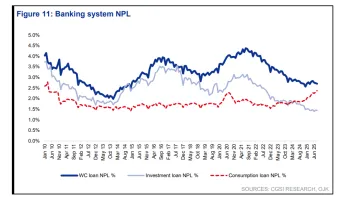How Asian Financial Services Providers Can Reach Gen Z
By Dan Jones, Sean Choo, & Edmund LimBeing authentic, embracing social media, and tailoring products to this generation’s real needs can position firms for success.
Generation Z is poised to reshape the global banking landscape, and no place will feel the impact quite like Asia. The region is home to nearly 60% of the world’s Gen Zers (people born between 1997 and 2012), according to the United Nations, and a strong growth outlook stands to enhance their spending and investing power.
Winning their business won’t be simple or straightforward, though. While the region’s Gen Zers trust traditional banks more than digital-only ones, according to a recent survey by YouGov, these young consumers are demanding. They want financial services that are seamless, personalized, and capable of completing transactions instantaneously. Brands also need to retool their marketing approaches to reach a generation that gets its information mainly from social media rather than traditional channels, and trusts people who look and sound like themselves.
To engage and capture the Gen Z market, financial service brands need to meet these consumers where they are and on their own terms. Here are three strategies that hold the key to success:
Create authentic communications that speak their language
Gen Zers are the first true digital natives, growing up in an online world and with a smartphone in their pockets from an early age. Sixty percent get their news from social media, according to the Oliver Wyman Forum’s Global Consumer Sentiment Survey. They prefer their information in digestible and entertaining portions rather than in lengthy, corporate-speak formats, and they rely frequently on influencers on YouTube, Instagram, TikTok, and the like to shape their decisions about what to buy and where to invest. To reach this crowd, financial services providers need to be present on social media channels and speak in a language that will attract Gen Zers.
They prefer brands with an open, and even vulnerable, style. Gen Zers want to be invited into genuine conversations where they are heard. Businesses need to embrace their unique self-expression with an unfiltered authenticity of their own.
For example, since 2020, a bank in China has adopted an innovative approach to engaging Gen Zers. Through a major Chinese video-sharing community, the bank uses digital avatars personifying the attitudes of Gen Zers to serve anime-style videos that are humorous yet educational. The content addresses key concerns and insecurities faced by Gen Zers, such how to start building their savings and inculcating good financial habits. As a result of this campaign, the bank has attracted more than a million fans together with a large growth in savings cards issued.
Address this generation’s specific needs
Watching their parents and older siblings struggle financially has made many Gen Zers debt-averse, anxious about money matters, and determined to manage their finances differently. Yet they’re not sure if they’re making the right moves: Gen Zers are 40% more likely to report that “money stresses me out” than older generations and five times less likely to be disciplined with their spending.
Retooling products to address Gen Z’s financial needs is a good start, as is providing more educational and investing content. Firms should recognize the importance of playing the long game here. While many Gen Zers may not have much money today, they stand to inherit significant wealth over the next two decades. Grabbing the hearts and minds of Gen Zers today can determine which wealth managers, asset managers, and other financial institutions prevail in the years to come.
Consider a Singapore-based financial services company that launched a lifestyle-based product to help Gen Zers build up their wealth and protection in a seamless manner. Insurance and investment are typically perceived to be expensive and complex, especially for Gen Zers. So the company lowered the barriers to entry by allowing customers to gradually accumulate insurance coverage and grow their investments over time through micro-premiums as low as S$1. Customers can link the product to their preferred lifestyle activities, such as buying a meal, taking public transport, or even hitting a daily step goal. Whenever an activity is completed, a micro insurance or investment policy will automatically be issued and the premium charged to their selected payment mode. Over time, customers’ coverage and investments grow, allowing them to build their protection and wealth in a way that’s embedded in their daily lives.
Get phygital
Social media is part of Gen Zers’ identity. They spend as much time on YouTube, TikTok, and other social sites as older generations do watching cable television. So it stands to reason that their shopping behaviors are heavily influenced by social media, influencers, and the other members of their online communities.
Yet they still crave the ability to see and touch goods at a physical store — even more than millennials. The winning brands of the future will be those that create a seamless physical and digital experience. That can range from a traditional brick-and-mortar outlet to a digital kiosk or pop-up store during holidays or special events – anything that creates the personalized connections Gen Zers crave.
One of Singapore’s largest banks launched a new brand in 2011 targeted at millennials. In recent years the brand has evolved its strategy to engage the growing ranks of Gen Zers, both through social media and by embracing a more phygital approach. In 2019, it launched its first so-called borderless branch within a university campus with no teller counters or barriers. Designed like a shop rather than a conventional bank branch, the outlet features study and relaxation spaces, and allows students to reach out for financial advice in a relaxed environment and try the bank’s digital services, such as chatbots for student loans. The approach creates a more interactive engagement model that allows the bank to constantly collect insights from their customers and develop more contextualized products and services.
The bottom line for Asian firms
Generation Z is a real force in the making, shaped by technological, social, and cultural forces that are distinctly different than those of their elders. Yet financial executives shouldn’t be daunted by the challenge of reaching them. They just need to do what successful brands have always done: Gain a deep understanding of their customers through open, two-way engagement, and design relevant products and marketing that appeals to their target audience. Such an approach will never go out of style.
By Dan Jones and Sean Choo, Co-heads of Oliver Wyman’s Retail and Business Banking Practice, and Edmund Lim, Principal with Oliver Wyman.




















 Advertise
Advertise






